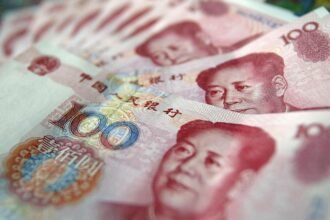The U.S. election brought voters out in droves for Donald Trump—and the markets didn’t just follow; they stampeded. Wall Street played its Trump card boldly, betting on a return to a lighter regulatory hand and an explosive dealmaking environment.
Across the globe, however, Asia awoke to a very different vibe. Investors took their first sips of coffee on Thursday, staring down a landscape shaken by Trump’s victory. The dollar surged, U.S. bond yields shot higher, and emerging markets braced for the impact—a potent cocktail that doesn’t exactly bode well for Asia. Emerging market currencies took a beating in the global session, with Mexico’s peso slumping as much as 3%, and Asian exchange rates looked poised for a bruising day as fears of a trade war loom large.
For Asia’s central banks, this isn’t just a wake-up call; it’s a full-blown crisis alert. If the selloff intensifies, intervention may be their only option. But without a coordinated global response, these efforts could feel like standing in front of a speeding freight train. Any appetite for “risk-on” trades that might have mirrored Wall Street’s rally will likely be doused by the double whammy of rising Treasury yields and a turbocharged dollar.
The stakes are sky-high if Trump goes full steam ahead with his 60% tariff on Chinese imports. For China, the regional economic heavyweight, the options are stark: either devalue the yuan to protect exports or unleash a massive fiscal stimulus to spark domestic demand. A 60% tariff could trigger a jaw-dropping 30-45% yuan devaluation, pushing USD/JPY skyward, possibly even past the 175 mark.
For Asia, a roaring dollar could spell disaster. Previous dollar surges have wiped out gains on local currency debt—the lifeblood of Asia’s emerging markets. With hefty external debts in U.S. dollars, some economies may feel the pinch turn into a chokehold. Trump’s victory may have set Wall Street on fire, but for Asia, the Trump effect is a high-stakes gamble that could reshape the financial landscape for years to come.





















